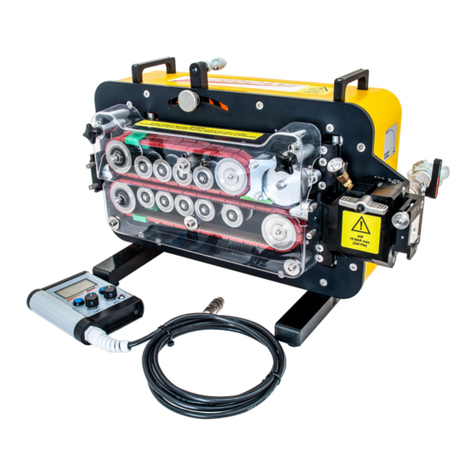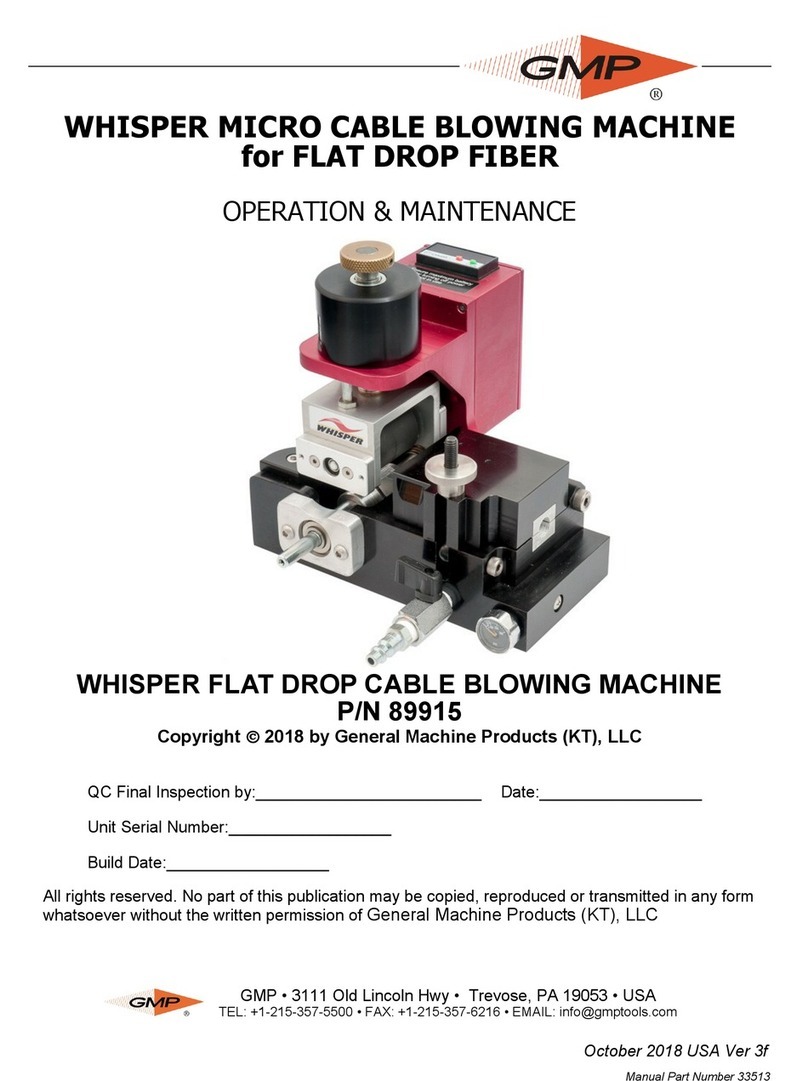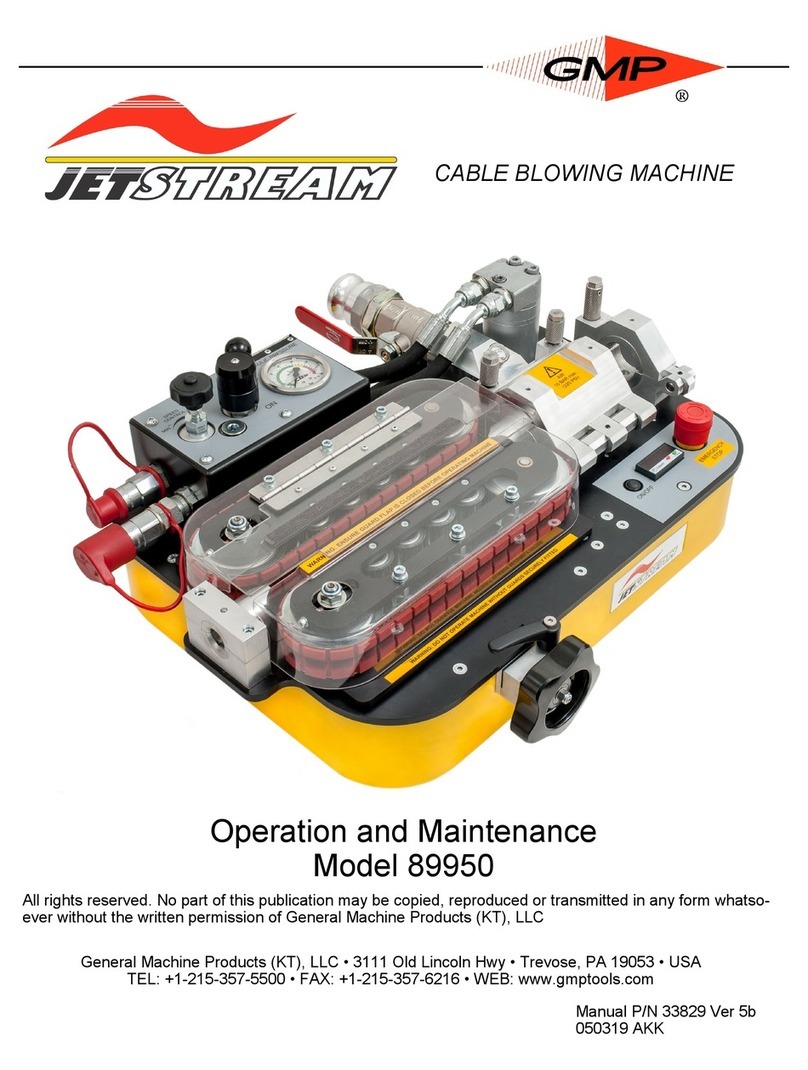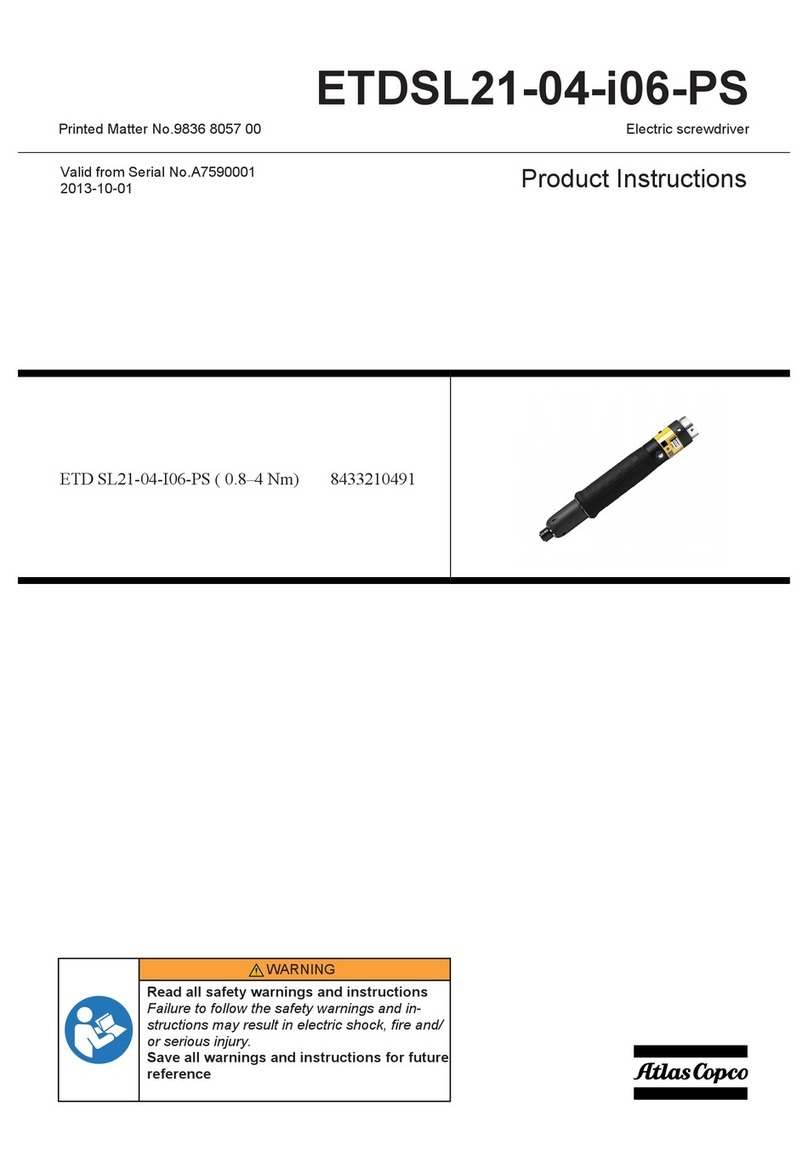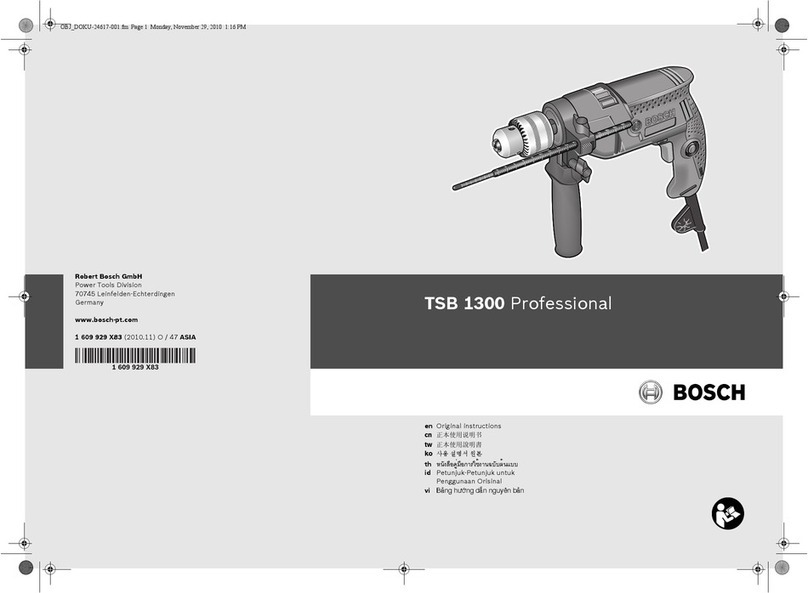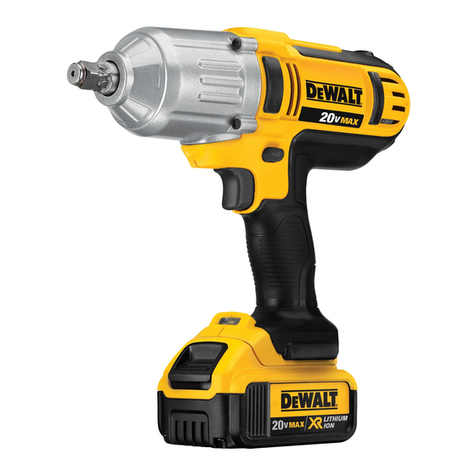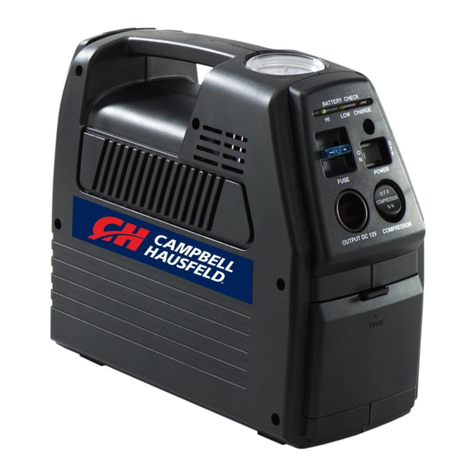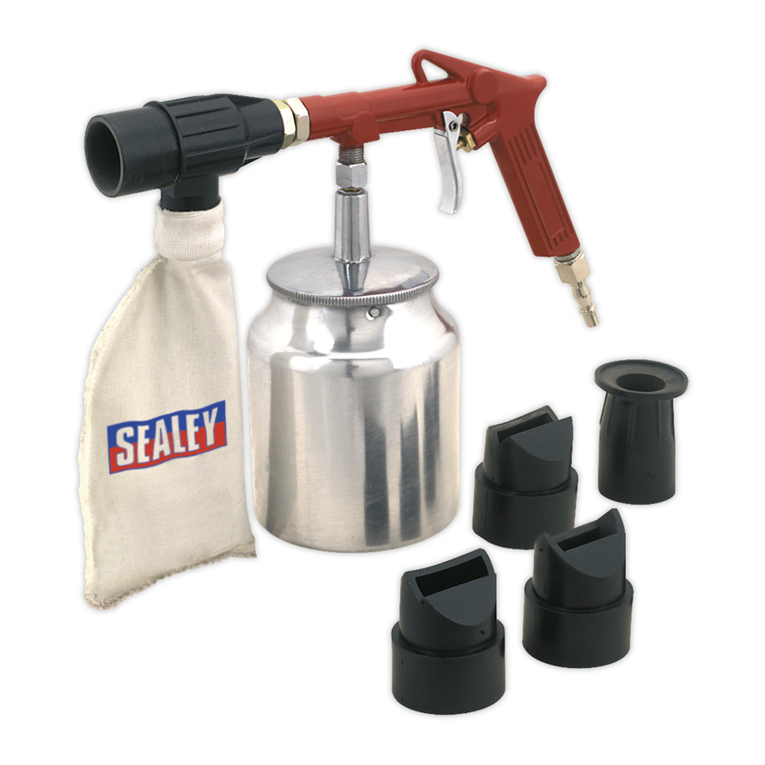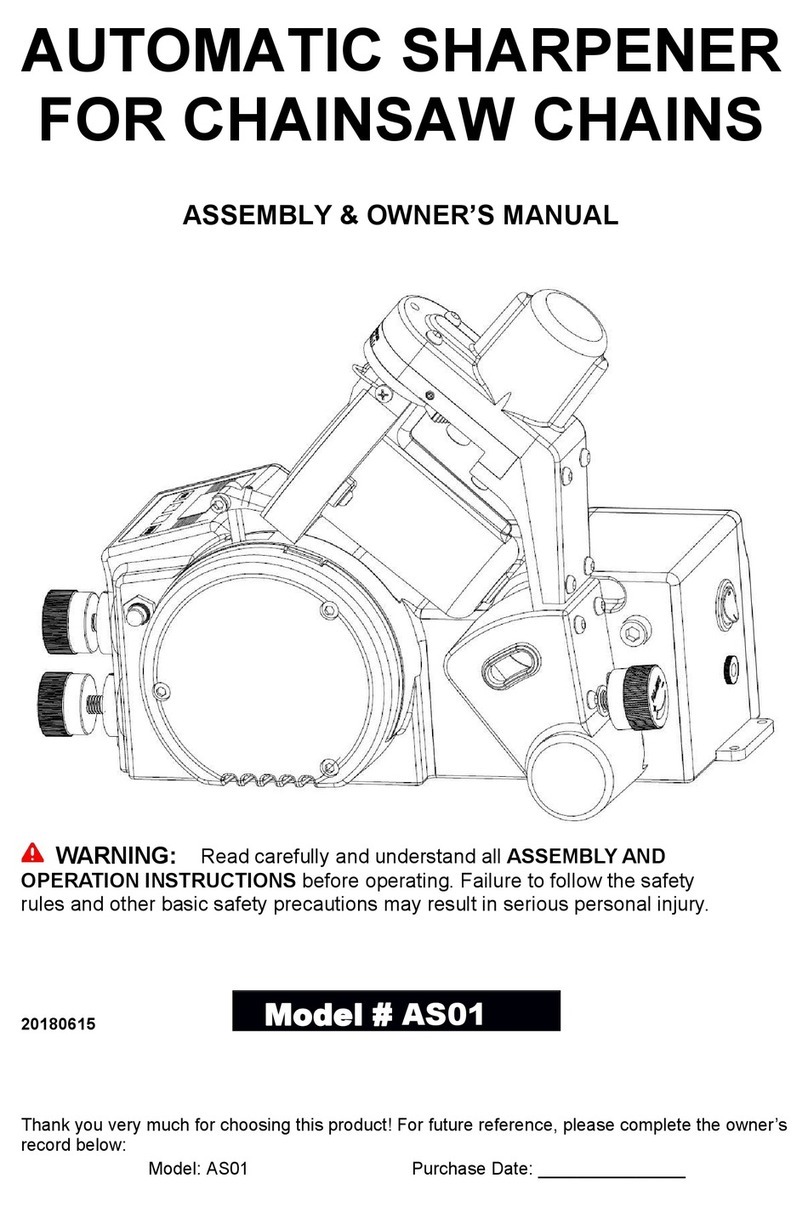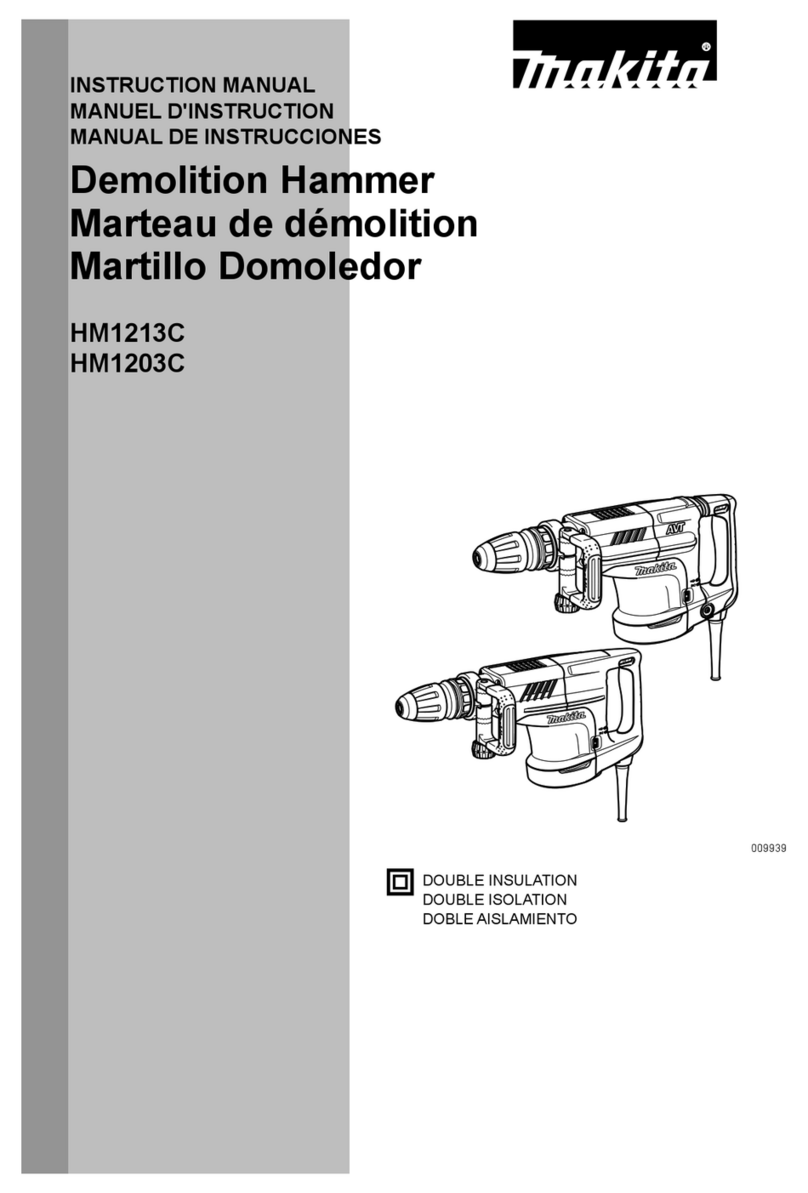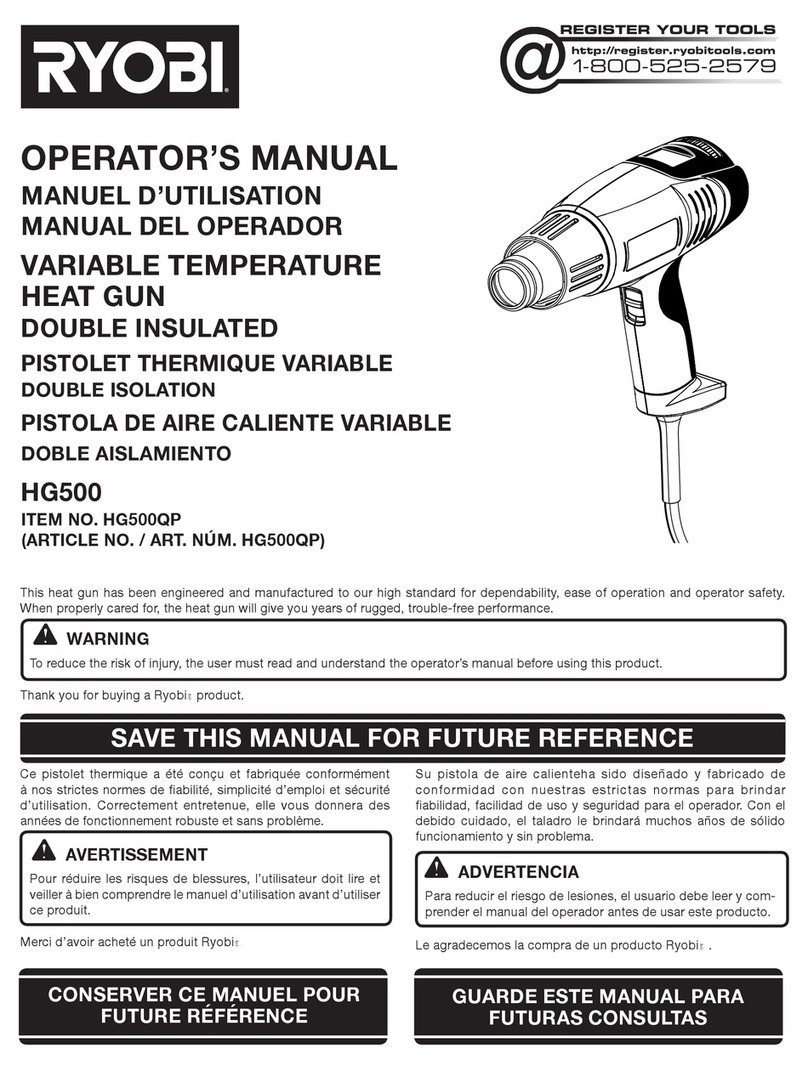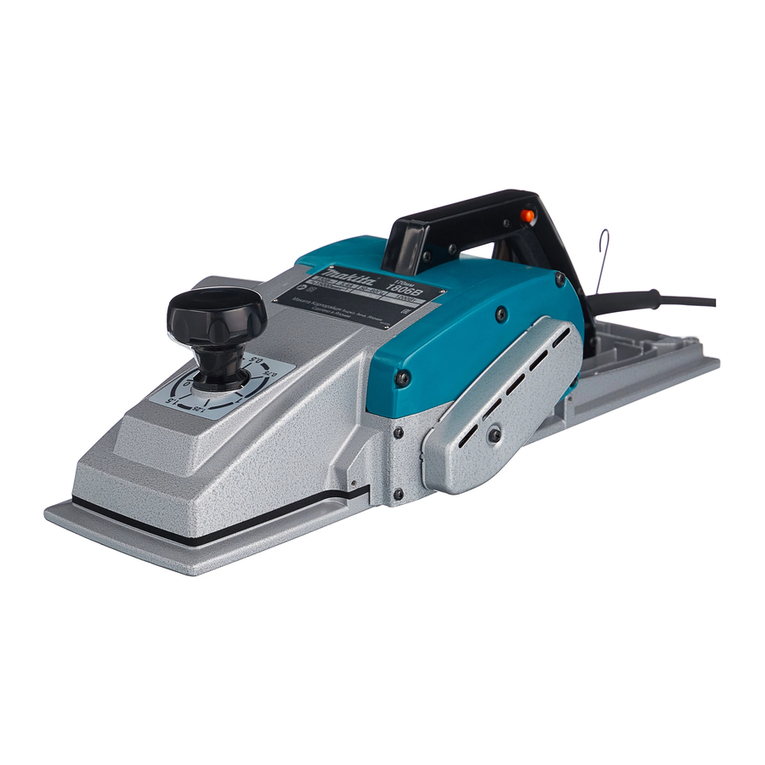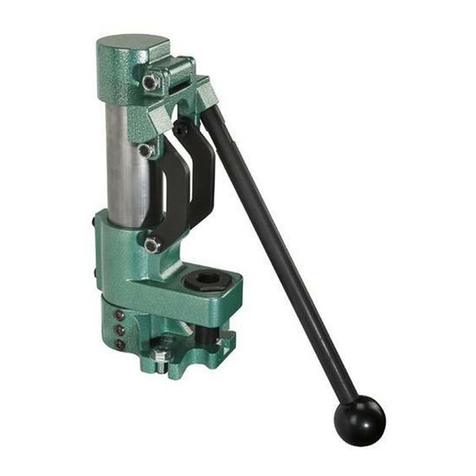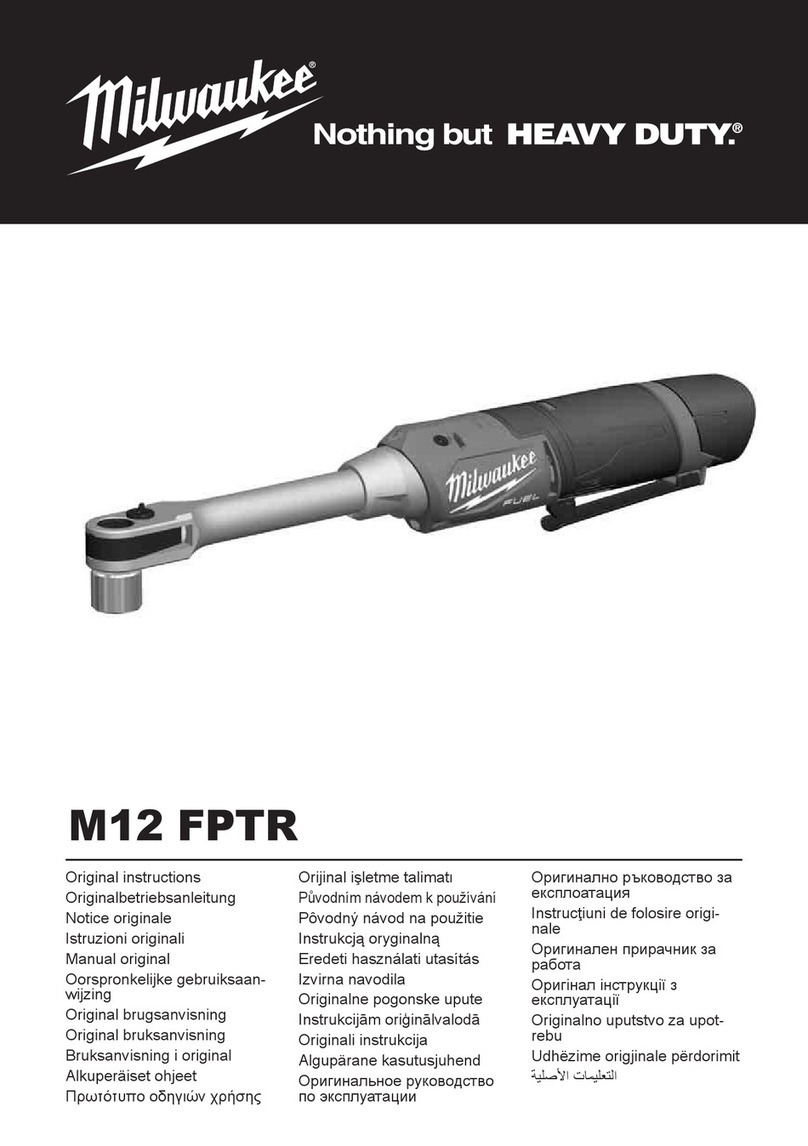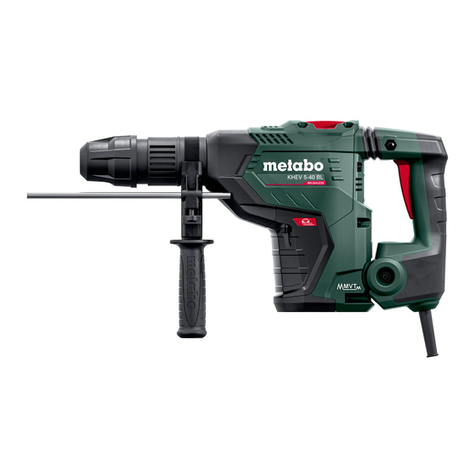GMP Air Stream 89300 Installation guide

Page 1 of 41
Operation and Maintenance
Model 89300
All rights reserved. No part of this publication may be copied, reproduced or transmitted in any form whatso-
ever without the written permission of General Machine Products (KT), LLC
General Machine Products (KT), LLC • 3111 Old Lincoln Hwy • Trevose, PA 19053 • USA
TEL: +1-215-357-5500 • FAX: +1-215-357-6216 • WEB: www.gmptools.com
CABLE BLOWING MACHINE
Manual P/N 36287 Ver 6a
071717 AKK

Page 2 of 41
REVISION HISTORY:
Rev.no Date Details Author
01 Jul -27-10 Original issue A. Sibun
02 Feb-1-11 Reformat for US A. Konschak
03 May -19-11 Updated photos to newer design A. Konschak
04 Nov-20-12 Update to reflect new design without remote A. Konschak
05 April-09-13 Update grounding and belt replacement info
Various corrections and spec updates A. Konschak
05.1 Feb-28-14 Added location of long inserts A. Konschak
06 Sept-20-16 Wording changes per engineering A. Konschak

Page 3 of 41
CONTENTS
1. Safety Instructions
2. Critical Points
3. General Description
4. Specification
5. Operating procedures
6. Maintenance
7. Procedure for changing inserts in the tube clamp
8. Procedure for changing inserts in the air box
9. Procedure for changing inserts in the infeed and exit guides
10. Procedure for replacing the air box housing seal
11. Procedure for changing the air box infeed guide
12. Procedure for changing the cable drive belts
13. Procedure for tensioning the drive belts
14. Procedure for checking and replacing the motor drive belt
15. Monthly Service – check list
16. Service History Record
17. Tube integrity and Lubrication
18. Recommended Spares List
APPENDICES
Appendix 1 Cable and tube insert selection chart.
Appendix 2 Recommended torque control potentiometer settings
Appendix 3 Counter/Ratemeter Programming Instructions
GMP Limited Warranty can be found at http://www.gmptools.com/warranty/

Page 4 of 41
1.0 SAFETY INSTRUCTIONS
THIS EQUIPMENT SHOULD BE USED ONLY BY PERSONNEL WHO HAVE BEEN GIVEN THE
APPROPRIATE TRAINING, AND WHO ARE COMPETENT TO USE IT.
THESE INSTRUCTIONS ARE TO BE MADE AVAILABLE TO OPERATORS OF THIS EQUIPMENT
AT ALL TIMES, FAILURE TO OBSERVE THESE SAFETY INSTRUCTIONS COULD RESULT IN
SERIOUS PERSONAL INJURY AND/OR PROPERTY DAMAGE.
WORK AREA AND GENERAL SAFETY
1. Read and understand the operation and maintenance manual supplied with this equipment. Keep it in a
convenient place for future reference.
2. Keep children and untrained personnel away from this equipment while in operation.
3. Keep all guards and safety devices in place. Do not operate this equipment with guards removed or
damaged.
4. Keep hands, feet and loose clothing away from moving parts, especially at cable entry points.
5. Always stop the machine and isolate compressed air and electrical services to carry out lubrication and
servicing.
6. Check machine before starting for worn or damaged parts. Check for signs of loose nuts and bolts etc.
7. If machine is left unattended, ensure that unauthorized use is prevented.
8. Never leave the machine unattended while in use.
9. Consider the use of safety barriers, especially when used in public places, observe all statutory
requirements for working environments.
10. Beware of pinch points involved with rotating components,
11. Beware of hot surfaces, machine uses compressed air.
12. When operating machine always wear appropriate safety clothing, ear defenders, eye protection, hard hat,
safety shoes and leather gloves, machine operates with compressed air at up to 15 Bar.
13. Prior to installation ensure the tube route is connected properly.
14. Beware of exposed electrical contacts. Do not touch, or allow metal objects to come into contact.
15. Machine may cause additional fire hazard if involved in an existing fire due to compressed air.
16. No personnel are to be in manholes or ducts when the Cable Blowing Machine is being operated.
17. The machine must be operated on firm ground.
18. Stay clear of cables or lines under tension.
19. Stay clear of pressurized air line and tube.
20. Only use the machine for its intended purpose, do not use the roller drive without the air chamber to push
or to retrieve cable, blow air in the far end to help cable recovery.
21. Do not place cable drum too close to the Cable Blowing Machine.
22. The compressed air supply must not be allowed to enter the air chamber or tube before the rollers have
been closed on to the cable. Do not turn the air on until a reasonable length of cable 150 ft. (50m) has

Page 5 of 41
been installed into the tube.
23. Ensure the cable drum rotates freely on its stand, the cable should leave from the top of the drum.
24. The cable should enter the machine in a clean and dry condition. In damp, dusty atmospheres, the cable
should be cleaned continuously as it enters the machine.
FAILURE TO DO SO MAY RESULT IN PERSONAL INJURY, AS THE CABLE
COULD BE EJECTED FROM THE CABLE BLOWING MACHINE WITH HIGH
FORCE AND VELOCITY.
If the connecting plug on the power lead to the generator / (or supply) supplied with the Airstream machine is
unsuitable and requires replacement, the new plug must be correctly connected observing the color codes as
below.
IT IS THE RESPONSIBILITY OF THE USER TO ENSURE THAT THE CONNECTIONS MEET THE
ELECTRICAL REGULATIONS FOR THE RELEVANT COUNTRY.
Brown (Live)
Yellow & Green (Earth)
Blue (Neutral)
Black (Live)
White (Neutral)
Green (Earth)
Alternative Wiring

Page 6 of 41
GENERAL PNEUMATIC SAFETY INSTRUCTIONS
The GMP Fiber Optic Cable Blowing Machine is a pneumatic device, using pressurized air to project cable at
high velocities. Please observe the following precautions when operating the Cable Blowing Machine:
► Compressed air can cause flying debris. This could cause personal injury. Always wear personal protective
equipment.
► Ensure no personnel are in the manhole at the far end of the cable run. Severe personal injury may result.
► Never open the air chamber when pressurized.
► Only authorized, fully trained personnel should operate the air compressor.
GENERAL ELECTRICAL SAFETY INSTRUCTIONS
The machine has electronic and electrical power and control circuits. Electric shock hazards exist that could
result in severe personal injury. Observe the following precautions to avoid electrical hazards:
► Do not operate in water. Do not expose the machine to rain.
► Do not remove cover of electronic control panel or power supply unit. There are no user serviceable parts
inside. Refer servicing to qualified service personnel.

Page 7 of 41
2.0 CRITICAL POINTS THAT DRAMATICALLY AFFECT THE
OPERATION OF THE CABLE BLOWING MACHINE
► PRESSURE ON THE CABLE (POSITION OF THE CLOSE ARM ASSY) SHOULD BE SET AS
PER THE INSTRUCTIONS
► BELTS TO BE CLOSED AT ALL TIMES WHEN CABLE IS INSTALLED INTO MACHINE.
► CORD SEALS IN AIR CHAMBER IN GOOD CONDITION AND CORRECTLY INSTALLED TO
PROVIDE GOOD SEALING.
► CORRECT CABLE SEAL INSTALLED.
► TUBE FULLY CONNECTED AND PRESSURE-TESTED.
► TUBE AND CONNECTING FITTINGS ARE SUITABLE FOR OPERATING AT 15 BAR AIR
PRESSURE.
► TUBE CLAMP SECURELY TIGHTENED.
► COMPRESSOR CAPACITY 15 BAR AND SUITABLE FOR SIZE OF TUBE BEING USED.
► CABLE DRUM MUST BE LOCATED DIRECTLY BEHIND AND IN LINE WITH THE BLOWING
MACHINE.
► AIR CHAMBER, DRIVE BELTS AND PULLEYS, CABLE GUIDES, MUST BE CLEAN AND
FREE FROM DEBRIS, SLUDGE, DIRT, WATER AND LUBRICANT.
► THE CABLE MUST BE HAND GUIDED INTO THE BLOWING MACHINE THROUGH A DRY
CLEAN CLOTH BY THE OPERATOR WEARING WORK GLOVES.
► ENSURE THE COMPRESSED AIR SUPPLY IS NOT APPLIED TO THE CABLE UNTIL
APPROXIMATELY 150 FEET OF CABLE HAS BEEN INSTALLED OR THE MOTOR BEGINS
TO LABOR.

Page 8 of 41
DISCLAIMER
General Machine Products (KT), LLC takes care in the design of its products to
insure that the cable is protected during installation. Due to the variety and
different methods of cable manufacture the responsibility of checking the cable
compatibility with the equipment lies with the operator. Therefore, General
Machine Products cannot accept liability for any damage to the cable.

Page 9 of 41
3.0
GENERAL DESCRIPTION
The GMP AirStream machine is designed to install small diameter cable into underground tubes.
The machine uses a DC servo motor and reduction gearing to drive a pair of flexible belts (both belts are
driven).
The belts are covered with a soft pliable coating to prevent damage to the cable. The belts offer a large surface
area in contact with the cable ensuring high grip with reduced compressive loading.
During installation, the torque applied to the cable by the rollers can be adjusted to prevent the cable buckling
and to prevent damage to the cable. A full range of accessories is available to allow the machine to handle a
wide range of cables and tubes. This machine has the added function of high/low torque selection; this has
been developed to give greater sensitivity when operating in the low torque region aiding the installation of
small cables.
The machine may be placed on the ground or on a support to bring the cable to a suitable height. A separate
reinforced transit housing is provided, this will protect the machine from damage during transit and can be used
as a support for the machine when being used to install cable.

Page 10 of 41
4.0 SPECIFICATION
* The sensitive electronics needed to give the desired control over the installation speed and torque
require a certain electrical supply quality. Should a generator be necessary General Machine
recommends the use of an inverter type generator with a pure sine wave output. Please contact
General Machine Products (KT), LLC should you require further assistance.
Cable size: 2.5 to 11.0 mm 0.118" to 0.433"
Tube size: (OD) 5 to 18.0 mm 0.197" to 0.708"
Cable speed: 0-80 m/min. 0-262 ft/min
Maximum pushing force: 20 Kg. 44 lb.
Maximum air pressure: 15 bar. 210 psi.
Power requirements:* 100-277Vac 50/60 Hz
(power supply input)
Weight 14 Kg approx. 31 lbs. approx.
Weight inc case 31 Kg approx. 68 lbs. approx.
Dimensions (ht x length x width) 266 mm x 460 mm x 305 mm 10 1/2"x 18 1/8" x 12"
Ambient Temperature Range 0-40° C 32-104° F
48Vdc, 250W
(power supply output)

Page 11 of 41
5.0 OPERATING PROCEDURE
IT IS IMPERATIVE THAT ALL PERSONS USING, OPERATING OR MAINTAINING THIS CABLE
BLOWING MACHINE:
▪ HAVE RECEIVED COMPREHENSIVE TRAINING IN THE USE OF THIS MACHINE.
▪ ARE COMPETENT TO USE IT,
▪ AUTHORIZED TO USE IT AND
▪ HAVE READ AND UNDERSTOOD THIS MANUAL
▪ GENERAL MACHINE PRODUCTS (KT), LLC CANNOT BE HELD RESPONSIBLE FOR
MISUSE OF THIS EQUIPMENT.
Set up for installing cable with the machine mounted above ground:
Position the machine in line with the route of the duct.
Position the cable drum behind the machine and in line with the machine. See sketch below (this shows a plan
view of the recommended set up).
Ensure the machine is secure (either on its own stand or a
separate suitable stand).
Ensure the machine is fitted with the appropriate guides and collets to suit the cable being installed and tubes
into which the cable is to be installed. (See Appendix 1 for details of interchangeable parts).
To set the machine up to install cable it will be necessary to:
Select the appropriate torque setting for the cable being installed, if in doubt start with the low torque setting.
Fit the tube into which the cable is to be installed into the air box and tube clamp.
Fit the cable through the machine.
Connect the air supply to the machine.
Connect the electrical power input to the machine.
Cable Drum AirStream Machine
Tube Route

Page 12 of 41
Fit the tube into which the cable is to be installed into the air box and tube
clamp.
It is recommended that a length of tube similar in size to the tube into which the cable is to be installed be fitted
in the tube clamp. This length of tube may then be connected to the installed tube (the length of tube
underground into which the cable is to be installed) using a suitable connector.
Slide a suitable size O ring over the end of the tube.
Fit the tube into the end of the air box housing so that it protrudes approx. half way into the housing, position
the O ring so that it sits against the seal face, as shown in the illustration below.
Once the tube has been positioned, the
tube clamp may be closed, the swing
bolt swung down and the thumb nut
tightened, the tube is now secure.

Page 13 of 41
Fit the cable through the machine.
It is now possible to insert the cable in the machine, this can be carried out in 2
ways.
Method 1:
This method is only suitable if the machine has been previously set up with the correct infeed and exit guides
from the belts to suit the cable being installed, see section 9 for the procedure for changing the guides.
• Turn the speed control to zero.
• Turn the torque control to approx. ¼ turn from zero.
• Open the close assembly arm fully to the right.
• Ensure the direction switch is in the forward position.
• Select the appropriate split cable seal (see appendix 1) and position it in the groove in the seal housing.
• Press Start and slowly turn the speed control clockwise until the belts are just moving.
• Take the cable to be installed and pass it through the infeed guide so that the end is between the belts.
• Close the close arm to the left gently until the cable is gripped (there is no need to apply the full
installation pressure to the cable at this stage) – the cable should now feed slowly through the belts, cable
seal, air box and into the tube.
• Press Stop.
• Close and tighten the thumb nut securing the airbox.
• Set the machine up to install the cable into the duct.
Move the close assembly
to the far right to fully
open the drive belts
Loosen the thumb
nut and open the
seal housing

Page 14 of 41
Method 2:
• Open the close assembly arm fully to the right.
• Remove the top halves of the belt infeed and exit guides using the knurled screws (screwdriver slots are
provided if necessary). Ensure the correct guides are fitted for the cable (see appendix 1)
• Select the appropriate split cable seal (see appendix 1) and position it round the cable.
• Take the cable and simultaneously place it into the tube in the air box and thread it through the gaps in
the belts guards and between the belts. Ensure the cable seal seats in the appropriate groove in the seal
housing.
• Replace the top halves of the belt infeed and exit guides.
• Close the airbox
• Set the machine up to install the cable in the duct.
Setting the clamp force:
Close the drive roller assembly onto the cable as
follows:
The photo shows the drive roller close thumb screw
slightly loosened. (The assembly is free to move).
This thumb screw is attached to the clamp arm lever.
The clamp arm lever controls the position of the roller
assembly.
As the clamp arm is moved around the quadrant the
belts move together and apart.
When the clamp arm is furthest to the right, the gap
between the belts is at a maximum. And vice versa.
When preparing the machine to insert the cable, the
clamp arm is positioned at its furthest point to the right
(rollers open). Once the cable has been positioned in the machine the rollers must be closed on the cable in
order to drive the cable. (And to stop the cable being dragged back out of the machine by any tension in the
cable).
The amount of pressure on the cable can be varied simply by loosening the thumb nut, moving the clamp arm
lever to the right or left; as required, and tightening the thumbscrew.
As more experience is gained using the machine, the amount of compression required will become clear.
Note:
An alternative method of setting the compression force is detailed in the note at the end of Appendix 2.
Close assembly
clamp lever

Page 15 of 41
Connect the air supply to the machine.
The air inlet to the machine is male via a crowfoot coupling on the back of the airbox. An on/off valve is fitted to
the air box to provide control of the air supply to the operator and a pressure gauge is fitted to the air box to
indicate air box pressure. Maximum safe working pressure is 15 Bar ( 210 psi).
Connect the electrical supply to the
machine.
Note: Please refer to Section 4.0 Specification for details
on power supply quality. General Machine Products (KT),
LLC recommend the use of a Honda EU1000i generator.
The transformer accepts voltages between 100-277 Vac
50/60Hz automatically. Adaptors are available to suit any
required existing connector, speak to our sales department
for full details and specification of connector.
If the power supply lead supplied with the AirStream Cable Blowing Machine is unsuitable and requires to be
changed refer to the safety instructions for further details.
IT IS THE RESPONSIBILITY OF THE USER TO ENSURE THAT THE CONNECTIONS MEETS THE
ELECTRICAL REGULATIONS FOR THE RELEVANT COUNTRY.
The machine is now ready to start the cable installation.

Page 16 of 41
Set up for installing cable with the machine mounted below ground:
The set up is similar to the set up for installing cable above ground, (described above) typically this type of
installation is demanded for “series blowing” i.e. when a length of cable is already installed, and the limit of
installation distance is reached. In such cases it is customary to couple a “series machine” sited down a
manhole some distance from the point of main installation. This machine operates in conjunction with the
machine sited at the main point of installation. The GMP Airstream machine is ideally suited to this type of
operation, it may be coupled with a second machine to increase the distance a single cable can be installed
without joins. The only difference between this set up, and the set up for installing cable with the machine
above ground, is that there will be no drum stand carrying the cable drum. The cable will be exiting from one
side of the manhole and blown into the tube at the other side of the manhole. The machine should be aligned
with both the incoming cable and the outgoing tube path, both side to side and up and down.
NOTE: THE MACHINE MUST NOT BE SUBMERGED IN WATER.
If the hole is full of water it must be pumped out before placing the machine on the bottom of the hole.

Page 17 of 41
Installing cable.
The machine is fitted with a range of controls to help the operator to install cable in the minimum time with the
least risk of causing damage to the cable or tube.
These controls are identified and their function is described below.
Torque control:
This dial controls the motor torque, turn this clockwise to increase the torque (pushing force) applied to the
cable by the belts. Turn counter-clockwise to reduce the amount of torque applied to the cable by the belts.
Speed control:
This dial controls the motor speed, turn this clockwise to increase the speed of the belts (and the cable). Turn
counter-clockwise to reduce the speed.
Start:
This switch starts the belts moving in the direction selected, with the speed and torque selected by the dials
and the high/low torque switch. Whenever the power to the machine is disconnected and reconnected, it will be
necessary to depress this switch before the machine will run.
Stop:
This switch will stop the belts, the motor will remain energized preventing air pressure blowing the cable out of
the machine.
Note: It is possible to reset the distance to zero even if speed is being displayed on the screen.
Should it be necessary to replace the speed distance-measuring device please contact GMP Products.
reversing of the machine while installing cable.
Speed Distance indicator:
This device will measure and display the distance travelled by the cable and also the speed at which the cable
is travelling. To toggle between speed and distance press the right-hand ‘Green’ button twice. Pressing the
right hand ‘Green’ button once shows what is being displayed – Speed or distance. Tacho represents speed,
Count represents distance while displaying the distance only it is possible to reset by pressing the left hand
‘Red’ button. Should it be necessary to replace the speed distance – measuring device please contact GMP
Products.
High/Low Torque Switch:
This allows the selection of the torque range the Airstream operates in. For smaller cables the low torque
setting will give finer adjustment over low end torque for the machine. Positions are UP for high torque and
Forward /
Reverse
Speed /
Distance
Indicator
High/Low
Torque
Selector
Speed
Control
Torque
Control
Stop Start

Page 18 of 41
DOWN for low torque.
Note: It is not possible to switch between high and low torque once the belts are moving. To switch the
torque press STOP, change the torque switch setting and start again.
Forward/Reverse Switch:
This will change the direction of the belts but only when the machine is stationary to prevent accidental
reversing of the machine while installing cable.
To install cable:
Note: If the belts are stationary for approx. 5 seconds the machine will reset and it will be necessary to
press the start button again to continue installing. This is a safety feature added to protect both the
cable and Airstream motor.
For the first time. i.e. installing a cable type that has not been installed before and whose characteristics are
unknown.
Connect the power to the machine.
Select the high/low torque switch position, if in doubt initially use the low torque setting.
Select the Forward direction.
Turn the torque and speed controls counter-clockwise to the minimum position.
Press “start” button.
The machine will try to push the cable, with the torque control set to a minimum the belts will not turn or only
very slowly.
It is now necessary to set the torque control to a position appropriate to the stiffness of the cable and the
characteristics of the cable insulation. See Appendix 2 for recommendations. If the cable type has been
installed before, the settings will be available; the torque control may be set at the previously determined
position.
Set the torque control to the position determined above and turn the speed control. The rollers will now start to
turn and the cable will feed through the air box (increase speed setting to max. if required). When the cable
has travelled a reasonable distance, (say 300ft/100 meters) turn on the air feed, this will help the machine to
feed the cable.
The tube route, through which the cable is to be fed, should be configured in such a way that the cable can
feed all the way along the tube and out the other end. It will be necessary to be able to determine when the
cable has emerged at the other end of the tube route. A typical way of achieving this aim is to have a
colleague positioned at the end of the tube run; in contact with the main installer using a radio transmitter/
receiver of some description. In this way the main installer may be advised when the cable has completed the
run, he can then stop the machine.
If there is an unexpected obstruction in the tube route the rollers will see this as an increase in torque demand,
assuming the torque control has been set at an appropriate level, the rollers will stop turning before they push
the cable so hard as to cause it to buckle. If (due to lack of previous knowledge of the cable characteristics)
the torque control has been set at a figure which is too small to push the cable the setting may be increased.
Bear in mind that this will increase the risk of the cable being damaged by buckling.

Page 19 of 41
Grounding the Airstream Cable Blower.
Certain cable/duct combinations can generate large static build-ups, this can cause the Airstream to reset and
stop without apparent reason and in severe cases damage the machine. If this is occurring, ground the
Airstream via the ground point on the air box via a suitable copper conductor to a ground at the power source
or earth.
Grounding Point

Page 20 of 41
6.0 Maintenance
The GMP AirStream Cable Blowing Machine has been designed to give reliable, trouble free service over long
periods. The machine requires no sophisticated maintenance procedures, simple common sense checks and
precautions are all that are needed.
The main source of breakdown and/or malfunction of a machine being used outdoors is contamination by the
elements, this contamination may be introduced into the machine in a number of different ways.
There may be mud, dust or other contaminants carried into the machine on the cable or tube (there may be
surface coatings of lubricants or other release type agents on the outer surfaces of the cable and tube, this
could build up on the belts and make them slip).
The machine may be set down on a muddy surface, or be splashed by road going vehicles when it is being
used by the roadside.
It is convenient to consider each function of the machine in turn.
As a general rule, every time an interchangeable part is removed and replaced by a
part of a different size, shape etc. the part being removed should be thoroughly
cleaned before being returned to its box. Similarly the cavity from which it was re-
moved can also be cleaned prior to the assembly of the replacement part.
Air box parts: keep clean, build up of moisture
and dust will prevent the joint faces from mating,
prevent the housing seal from sealing etc. Use
any traditional workshop cleaning agent.
Tube clamp inserts: keep clean,
build up of moisture and dust, partic-
ularly in the grooves, will reduce the
clamping effect. Use traditional work-
shop cleaning agent.
Cable infeed and exit guides: keep clean, build up of moisture and dust
may nip the cable. Use any traditional workshop cleaning agent.
The machine should be returned to the manufacturers after every 1000 hours use (or at intervals of 12
months) for a major service.
Table of contents
Other GMP Power Tools manuals
